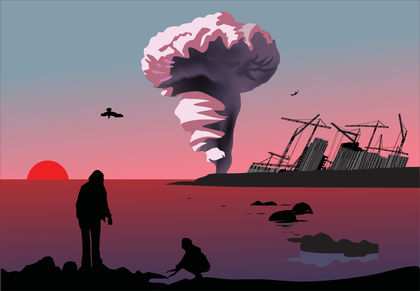Wars have been taking place from the beginning of mankind. Earlier these were confined to the battlefield and were fought with traditional weapons like swords and spears. However, with scientific development, wars today have become many times more dangerous and destructive. The two Super Powers possess bombs which in the event of a war between them can wipe out the entire human race.
The history of mankind tells us that wars have been a recurring feature of human existence. Even in the early stages of civilization men fought among themselves. They fought over property which comprised land, cattle and women. Later on, wars were fought between kings of different countries. But wars in the olden times were not so dangerous and deadly. The weapons of warfare were primitive and simple. To begin with, swords and spears were used. The damage done by wars both in terms of men and soldiers was minimal. Wars were confined to the battlefield and soldiers. Then the guns and cannons were invented. The nature of modern war has completely changed. It is no longer restricted only to the battlefield. Civilians too are attacked and killed in the modern warfare. Scientific inventions of deadly instruments of warfare have increased the destructiveness of modern war. Another feature of a modern war is that it is a total war. Besides being fought on land, it is also fought on sea, under sea and in the air. There are submarines to sink the ships carrying cargo and men.
Man’s urge for destruction is leading him towards newer and more lethal methods of warfare. Biological warfare is also a possibility now. Bombs filled with bacteria would be dropped. They would spread disease, poison the soil and the crops, make women sterile and so on. A biological war will be more dangerous than the nuclear war. Also different gases have been discovered to kill and destroy human beings. Tear gas and nausea gas have been considered obsolete now. Nerve gas has been found to be fourteen times deadlier than mustard gas. These gases have much larger killing potential than other.




























